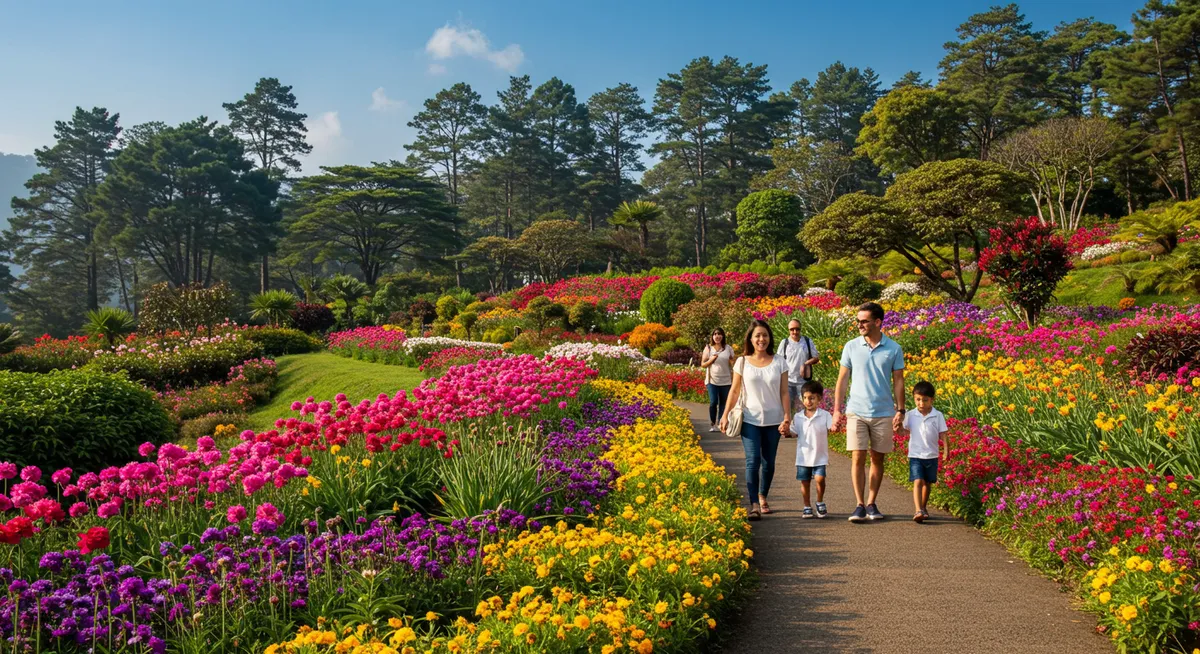
Your Essential Baguio Botanical Garden Guide
Table of Contents
Want to find the best nature experiences for this destination? Chat with our nature tourism specialist!
Get Nature TipsCategory: baguio-botanical-garden-guide
Discover the Serenity of Baguio Botanical Garden
Having explored countless green spaces across the Philippines, I can confidently say that the Baguio Botanical Garden offers a unique blend of natural beauty and cultural heritage. This serene oasis, officially known as the Centennial Park, is a must-visit for anyone seeking tranquility amidst Baguio City's bustling energy. My personal experiences navigating its winding paths have shown me its true charm, making it a place I often recommend.
This comprehensive Baguio Botanical Garden guide aims to provide you with all the insights you need to make your visit truly memorable. From its lush landscapes to its fascinating cultural exhibits, prepare to uncover the peaceful escape that awaits you here. We'll delve into what makes this garden special and how to best enjoy your time.
What to Expect at Baguio Botanical Garden
Stepping into the Baguio Botanical Garden feels like entering a different world, far removed from the city’s lively pace. You’ll immediately notice the crisp, cool air and the vibrant hues of the lush greenery. This horticultural haven is thoughtfully designed, offering numerous pathways that invite leisurely strolls and quiet contemplation. Visitors often find themselves enchanted by the diverse plant collections and the peaceful atmosphere.
From my own visits, I’ve learned that simply taking your time to absorb the tranquility is key. It's truly a tranquil escape perfect for families, nature lovers, or anyone needing a quiet moment. This Baguio Botanical Garden guide emphasizes its role as a vital green lung for the city, contributing significantly to Baguio's wider nature attractions.
Key Zones and Attractions Within the Garden
The Baguio Botanical Garden is divided into several engaging sections, each offering a unique experience. One prominent area is the Chinese Garden, featuring traditional architecture and serene ponds, creating a picturesque setting. Nearby, the Igorot Village showcases the indigenous culture of the Cordillera region with life-sized sculptures and traditional huts, providing a profound cultural insight.
Another highlight is the Japanese Garden, a testament to Filipino-Japanese friendship, with its intricate landscaping and reflective spaces. Personally, I always find the themed sections wonderful for photography. The Baguio Botanical Garden also features various themed plant collections and a Grotto dedicated to Our Lady of Lourdes, solidifying its reputation as one of the best nature parks in Baguio for both beauty and learning.
Planning Your Visit: Tips for a Seamless Experience
To ensure a smooth visit to the Baguio Botanical Garden, consider a few practical tips. The garden is open daily, usually from 6:00 AM to 6:00 PM, though it’s always wise to check for current hours. Entrance fees are minimal, making it an accessible attraction for all budgets. I always recommend wearing comfortable walking shoes, as you’ll cover quite a bit of ground exploring the extensive botanical garden.
Bringing a water bottle and a light jacket is also a good idea, given Baguio’s changeable weather. Parking is available, but public transportation, like jeeps or taxis, can drop you off right at the entrance. This Baguio Botanical Garden guide encourages you to allocate at least 1-2 hours to fully appreciate its beauty, and perhaps even complement your visit with some gentle hiking trails nearby.
Embracing Ecotourism and Conservation Efforts
The Baguio Botanical Garden serves not only as a tourist attraction but also as a crucial site for environmental preservation. It plays a significant role in conserving local and exotic flora, providing a sanctuary for various plant species. Visitors are encouraged to observe responsible tourism practices, such as staying on marked paths and refraining from picking plants, to support these conservation efforts.
My experience working with local conservationists reinforces the importance of parks like this for sustainable tourism. The garden promotes awareness about the importance of biodiversity and ecotourism. By understanding and respecting the garden's mission, you contribute to its ongoing maintenance and the broader goal of protecting Baguio’s natural heritage, aligning with Baguio ecotourism activities.
Frequently Asked Questions
Is there an entrance fee for Baguio Botanical Garden?
How much time should I spend at Baguio Botanical Garden?
Can I buy plants at Baguio Botanical Garden?
The Baguio Botanical Garden truly stands as a testament to the city’s commitment to preserving nature and culture. This Baguio Botanical Garden guide has aimed to equip you with the essential knowledge to navigate its serene landscapes and appreciate its unique charm. From quiet reflection in its themed gardens to cultural immersion in the Igorot Village, every corner offers a new discovery. It’s an ideal spot for photography, relaxation, and learning about local heritage.
Next time you're in Baguio, make sure to set aside time for this tranquil escape. Discover the rich flora and cultural narratives that make the Baguio Botanical Garden an unforgettable part of your Cordillera adventure.